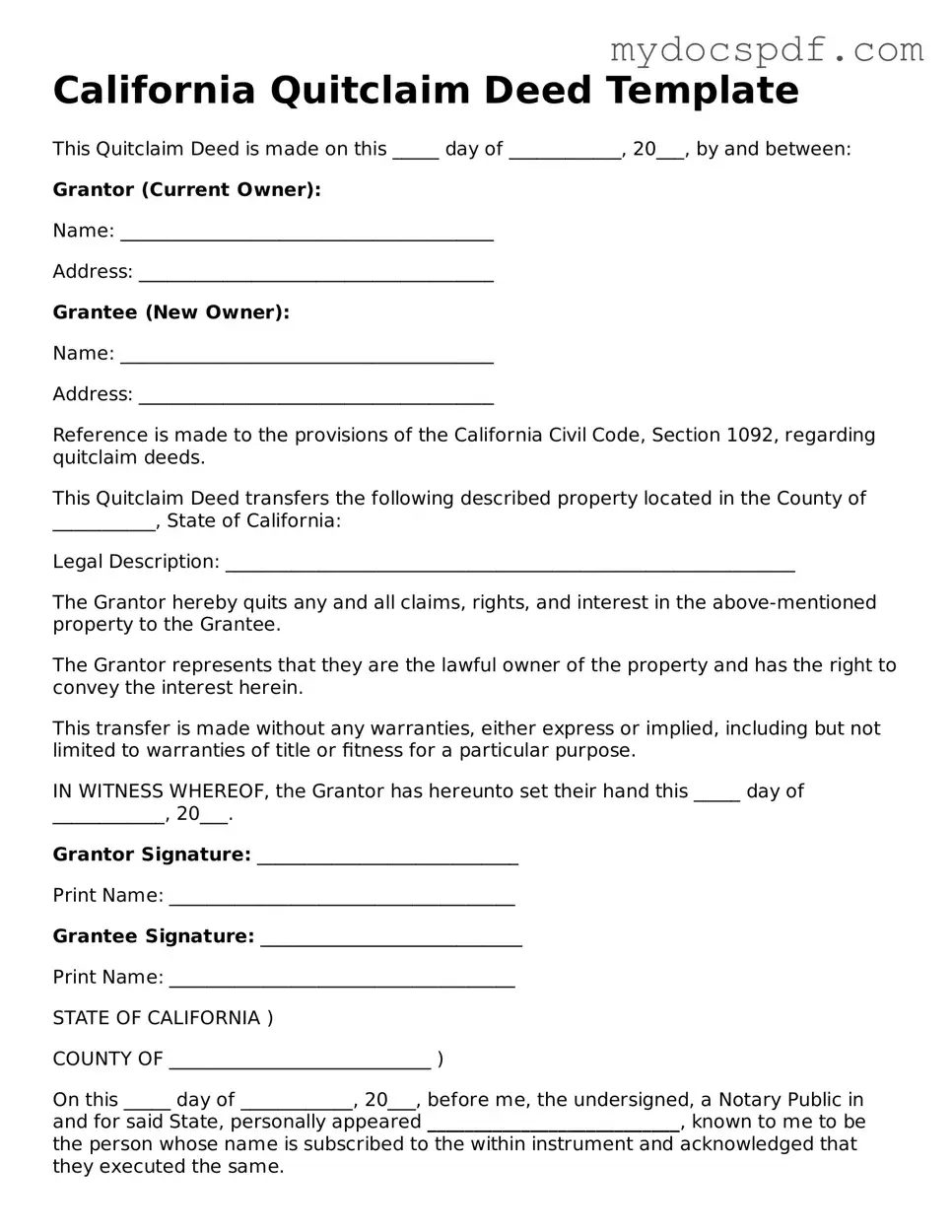California Quitclaim Deed Template
This Quitclaim Deed is made on this _____ day of ____________, 20___, by and between:
Grantor (Current Owner):
Name: ________________________________________
Address: ______________________________________
Grantee (New Owner):
Name: ________________________________________
Address: ______________________________________
Reference is made to the provisions of the California Civil Code, Section 1092, regarding quitclaim deeds.
This Quitclaim Deed transfers the following described property located in the County of ___________, State of California:
Legal Description: _____________________________________________________________
The Grantor hereby quits any and all claims, rights, and interest in the above-mentioned property to the Grantee.
The Grantor represents that they are the lawful owner of the property and has the right to convey the interest herein.
This transfer is made without any warranties, either express or implied, including but not limited to warranties of title or fitness for a particular purpose.
IN WITNESS WHEREOF, the Grantor has hereunto set their hand this _____ day of ____________, 20___.
Grantor Signature: ____________________________
Print Name: _____________________________________
Grantee Signature: ____________________________
Print Name: _____________________________________
STATE OF CALIFORNIA )
COUNTY OF ____________________________ )
On this _____ day of ____________, 20___, before me, the undersigned, a Notary Public in and for said State, personally appeared ___________________________, known to me to be the person whose name is subscribed to the within instrument and acknowledged that they executed the same.
WITNESS my hand and official seal.
Notary Public Signature: ______________________
My Commission Expires: ______________________
